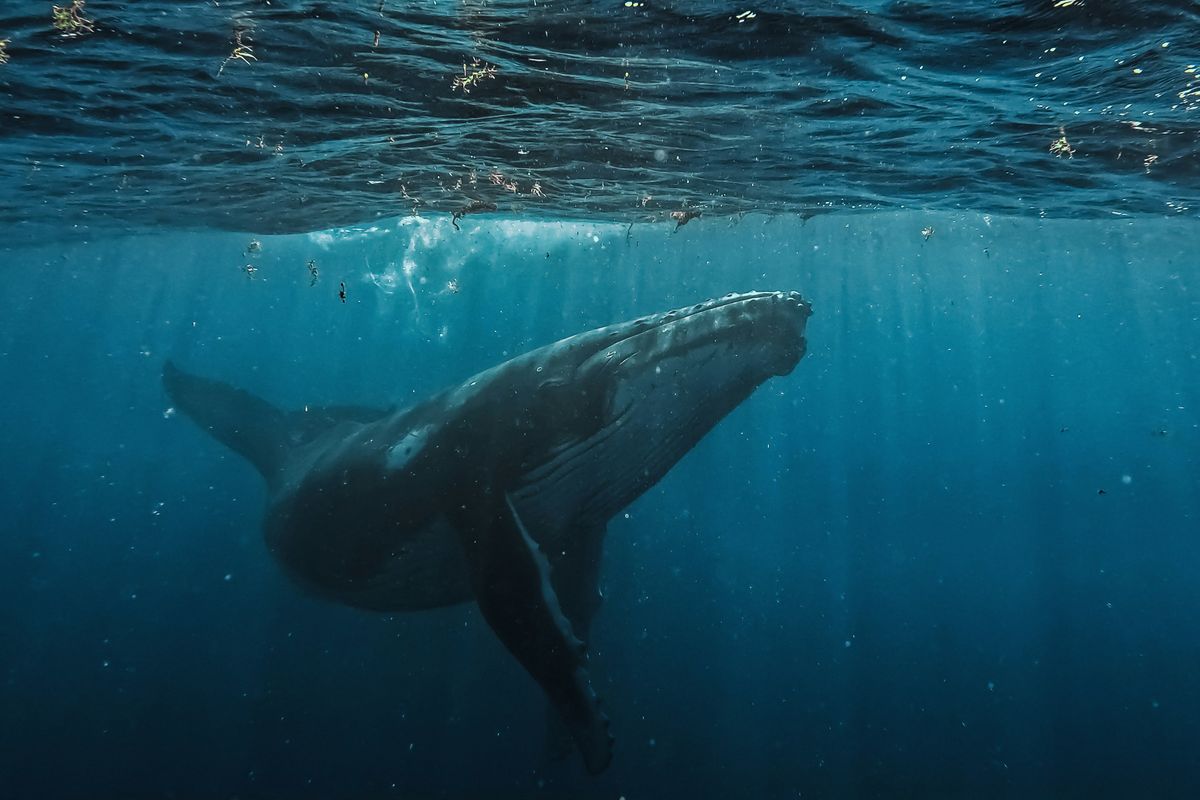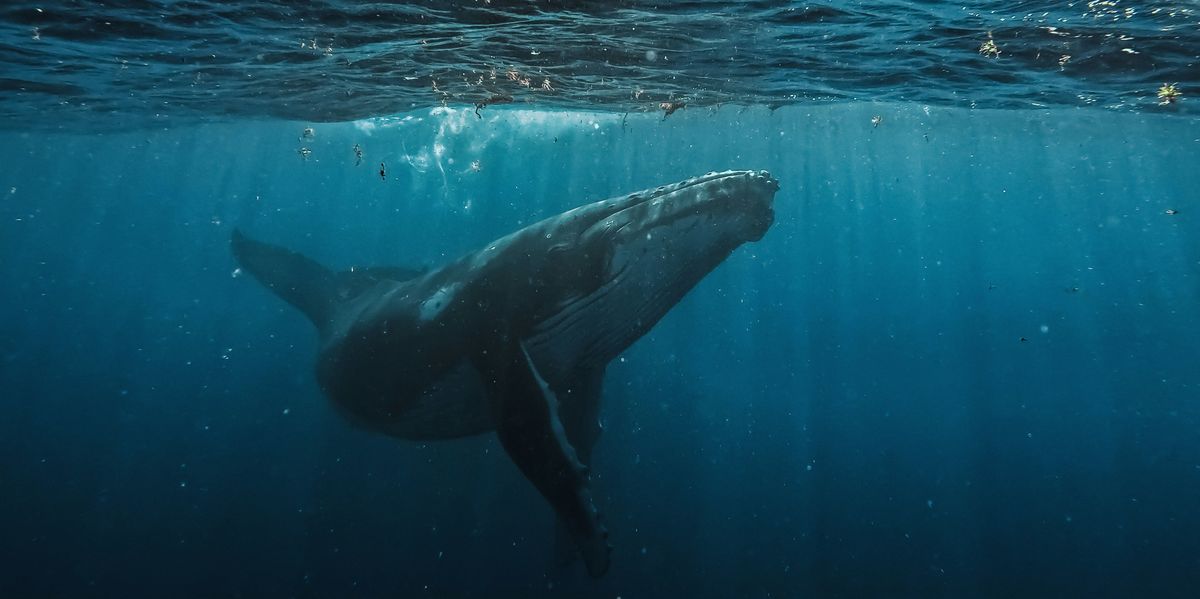
We’ve long known that baleen whales sing underwater and that males sing in tropical waters to attract females for mating. What we haven’t known is how they’re able to do it.
When humans make sound underwater, we expel air over through our vocal chords and the air we release rises to the surface as bubbles. But baleen whales don’t have vocal chords, and they don’t create bubbles when they vocalize. Toothed whales, such as sperm whales, beaked whales, dolphins and porpoises, have an organ in their nasal passages that allows them to vocalize, but baleen whales such as humpback, gray and blue whales don’t.
Whales are notoriously difficult to study because of their size and the environment they require, which is why the mechanism behind whale song has remained a mystery for so long. It’s not like scientists can just pluck a whale out of the ocean and stick it in an x-ray machine while it’s singing to see what’s happening inside its body to create the sound. Scientists had theories, but no one really knew how baleen whales sing.
Now, thanks to researchers at the University of Denmark, that mystery has been solved.
To figure it out, a research team blew air through larynxes that had been removed from three juvenile whales that had died after being stranded—one humpback, one minke and one sei whale. They discovered that the design of these “voice boxes” and the mechanism they use to create sound is unique among mammals.
The study, published in the journal Nature, describes a u-shaped structure with a cushion of fat and muscle that allows air to be recycled and prevents water from being inhaled. When air is pushed through it, part of the fatty cushion vibrates and creates the low frequency sound we call whale song.
“We’ve never seen this in any other animal,” lead author Coen Elemans told AFP. “This is a completely novel adaptation, and we think this allowed these large whales to make sound in the water while basically holding their breath.”
The low frequency of their singing also sheds light on how human shipping activity can impact these whales’ ability to communicate. Whale singing tops out at a frequency of 300 hertz, and whales have to be near the ocean’s surface to sing. Since boat sounds range from 30 to 300 hertz and are at the surface of the water, our activity can interfere with whales’ communication and reproductive behaviors in ways whales aren’t able to adapt to.
“They cannot simply choose to, for example, sing higher to avoid the noise we make in the ocean,” Elemans explained to BBC News, adding additional context for why it matters. “[These are some] of the most enigmatic animals that ever lived on the planet. They are amongst the biggest animals, they’re smart and they’re highly social.”
Whale populations have seen a positive turnaround since most countries put an end to commercial whaling, but now the threat is less direct. Since whales live in a mostly acoustic world under the waves, the noise created by boats and shipping vessels can affect their behavior. Since whales can’t “outsing” our boat noises, we need to alter our own behavior prevent negatively impacting theirs.
In February 2024, the U.S. Coast Guard launched a “cetacean desk” that alerts regional ferries and commercial vessels in Washington State’s Salish Sea to whale sightings in an attempt to prevent collisions and reduce noise when whales are known to be present. The alert system utilizes apps where mariners and civilians can report whale sightings, which are then passed on to captains.
Whale vocalizations are incredibly diverse and wide-ranging, and there’s a lot we still don’t know about how they communicate. We know that they vocalize to find one another in the murky depths and that males sing to attract females, but more research is needed to learn about the intricacies of their vocal repertoire.
But at least now scientists have a better picture of the “how,” which is one step closer to better understanding these massive, magnificent creatures.
Source: https://www.upworthy.com/how-baleen-whales-sing-has-finally-been-figured-out
